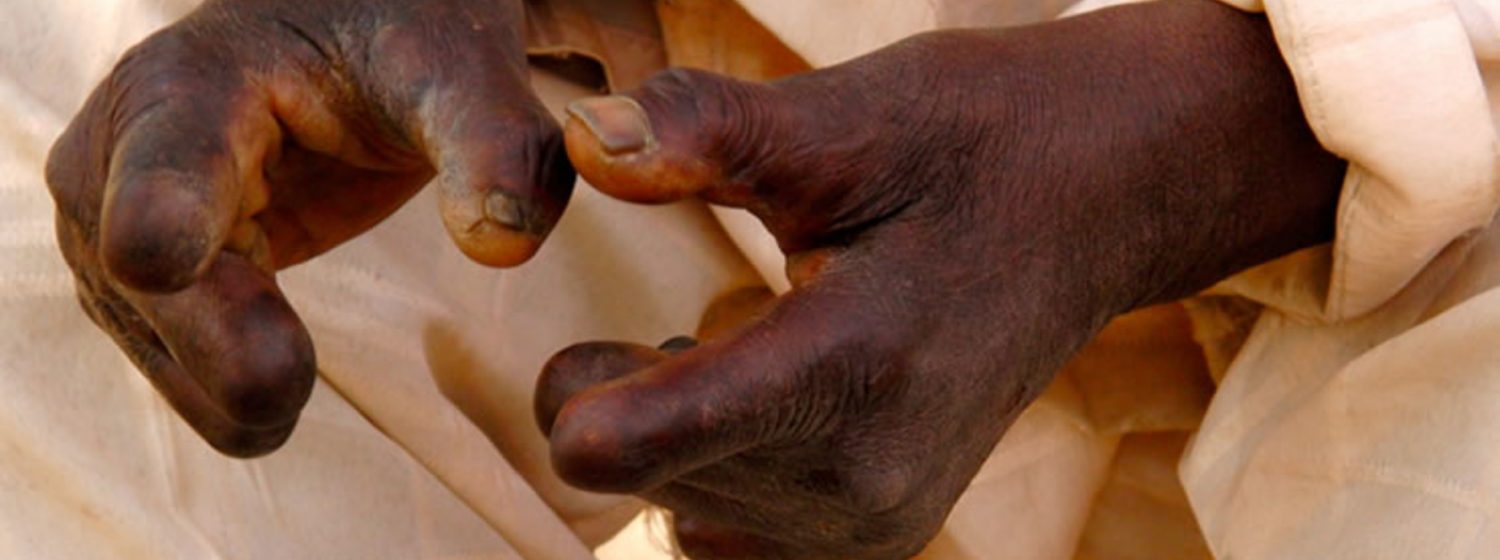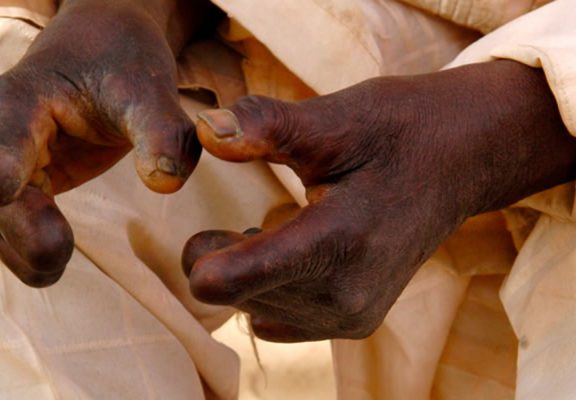Introduction
Leprosy is an infectious disease caused by Mycobacterium leprae, an acid-fast, rod-shaped bacillus. The disease mainly affects the skin, the peripheral nerves, mucosa of the upper respiratory tract, and the eyes. Leprosy is curable and treatment in the early stages can prevent disability.
Brief history of the disease and treatment
Leprosy is an age-old disease, described in the literature of ancient civilizations. Throughout history, people afflicted have often been ostracized by their communities and families.
Although leprosy was managed differently in the past, the first breakthrough occurred in the 1940s with the development of the medicine dapsone. The duration of treatment lasted many years, often a lifetime, making compliance difficult. In the 1960s, M. leprae started to develop resistance to dapsone, the only known anti-leprosy medicine at that time. In the early 1960s, rifampicin and clofazimine were discovered and subsequently added to the treatment regimen, which was later labelled as multidrug therapy (MDT).
In 1981, WHO recommended MDT. The currently recommended MDT regimen consists of medicines: dapsone, rifampicin and clofazimine. This treatment lasts for six months for pauci-bacillary and 12 months for multi-bacillary cases. MDT kills the pathogen and cures the patient.
Elimination of leprosy as public health problem (defined as a registered prevalence of less than 1 case per 10 000 population) was achieved globally in 2000. More than 16 million leprosy patients have been treated with MDT over the past 20 years.
AHO response
In 2016 WHO launched its “Global Leprosy Strategy 2016–2020: Accelerating towards a leprosy-free world” to reinvigorate efforts for leprosy control. The strategy focuses on children as well as on avoiding disabilities.
The Africa Leprosy Strategy 2021‒2030 is structured around following 3 core pillars:
Pillar I: Strengthen government ownership, coordination and partnership
Key interventions
- Ensuring political commitment and adequate resources for leprosy programmes.
- Contributing to universal health coverage with a special focus on children, women and underserved populations including migrants and displaced people.
- Promoting partnerships with state and non-state actors and promoting intersectoral collaboration and partnerships at the international and national levels.
- Facilitating and conducting basic and operational research in all aspects of leprosy and maximize the evidence base to inform policies, strategies and activities.
- Strengthening surveillance and health information systems for programme monitoring and evaluation (including geographical information systems).
Pillar II: Stop leprosy and its complications
Key interventions
- Strengthening patient and community awareness of leprosy.
- Promoting early case detection through active case-finding (e.g. campaigns) in areas of higher endemicity and contact management.
- Ensuring prompt start of, and adherence to treatment, including working towards improved treatment regimens.
- Improving prevention and management of disabilities.
- Strengthening surveillance for antimicrobial resistance including laboratory network.
- Promoting innovative approaches for training, referrals, and sustaining expertise in leprosy, such as e-health.
- Promoting interventions for the prevention of infection and disease.
Pillar III: Stop discrimination and promote inclusion
Key interventions
- Promoting societal inclusion by addressing all forms of discrimination and stigma.
- Empowering persons affected by leprosy and strengthening their capacity to participate actively in leprosy services.
- Involving communities in actions for improvement of leprosy services.
- Promoting coalition-building among persons affected by leprosy and encourage the integration of these coalitions and/or their members with other community-based organizations.
- Promoting access to social and financial support services, for example to facilitate income generation, for persons affected by leprosy and their families.
- Supporting community-based rehabilitation for people with leprosy-related disabilities.
- Working towards abolishing discriminatory laws and promote policies facilitating inclusion of persons affected by leprosy.



